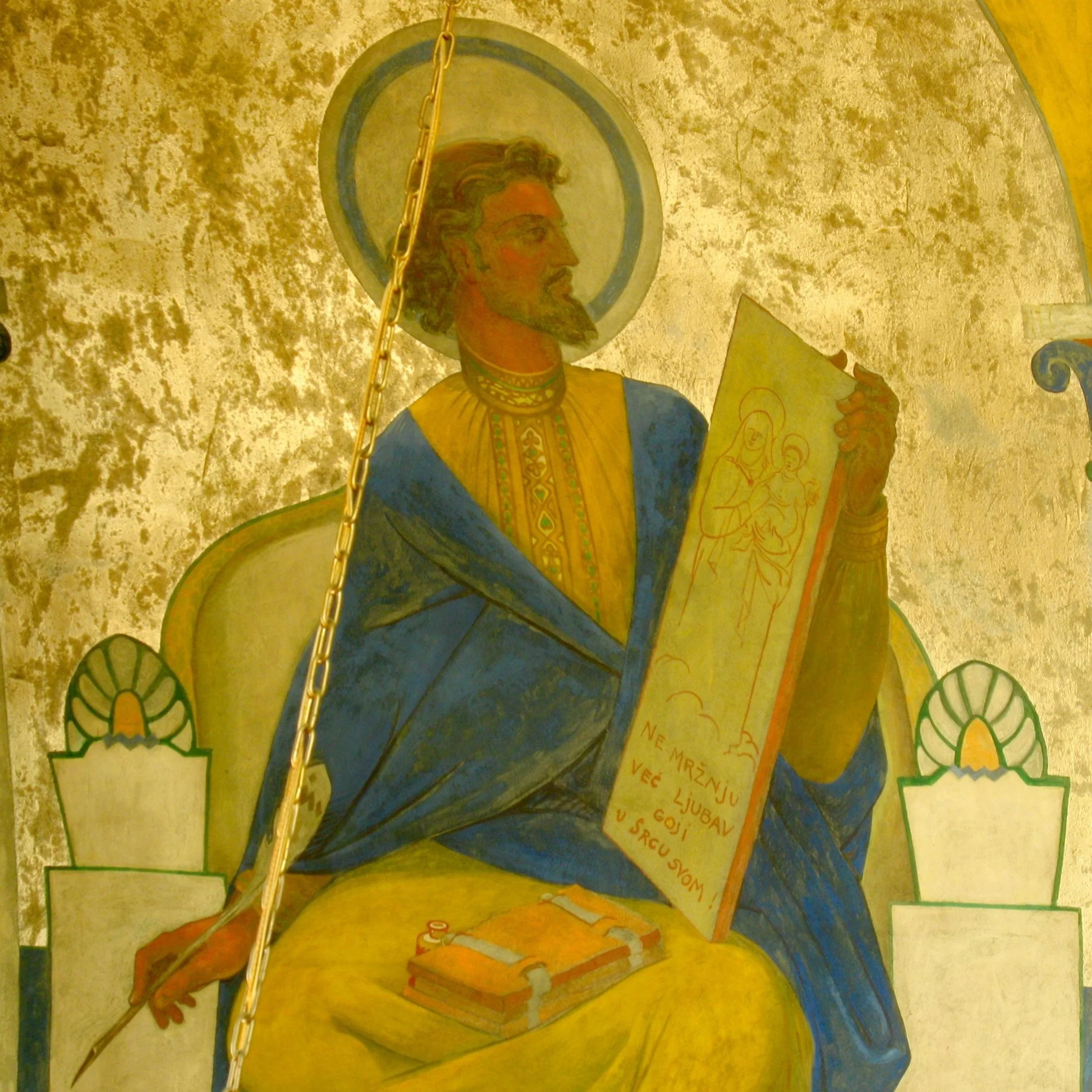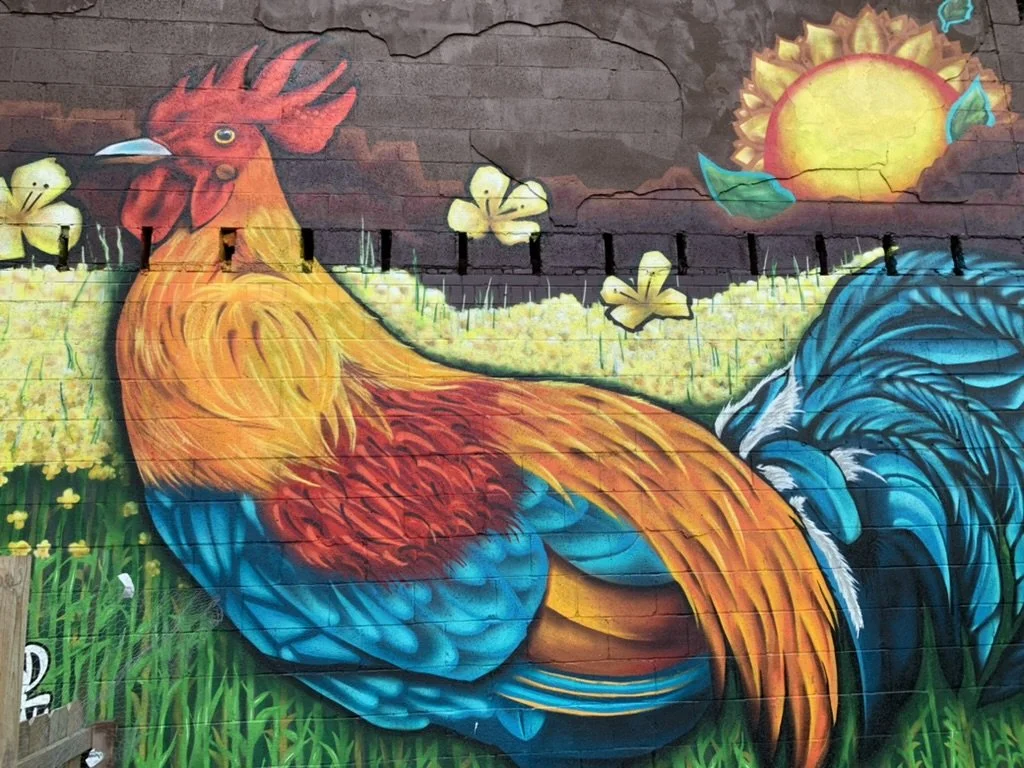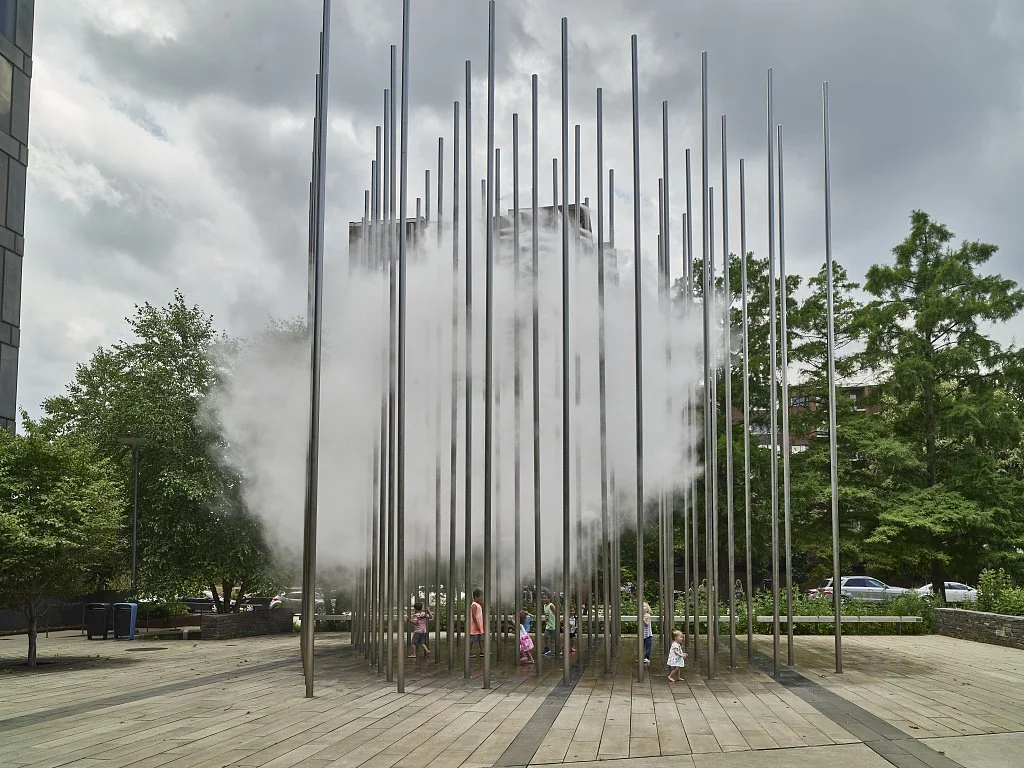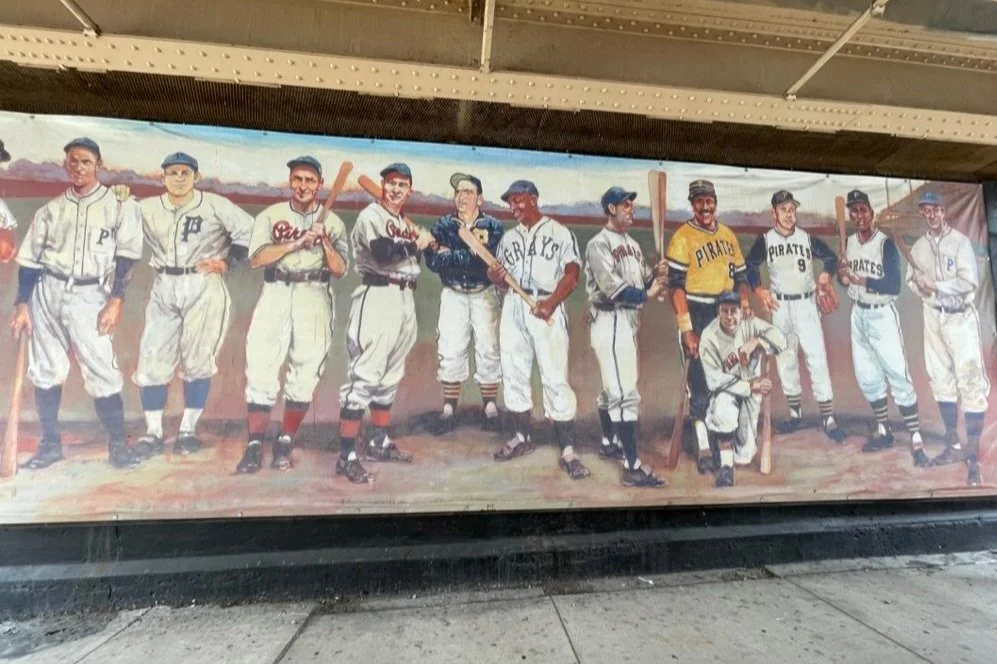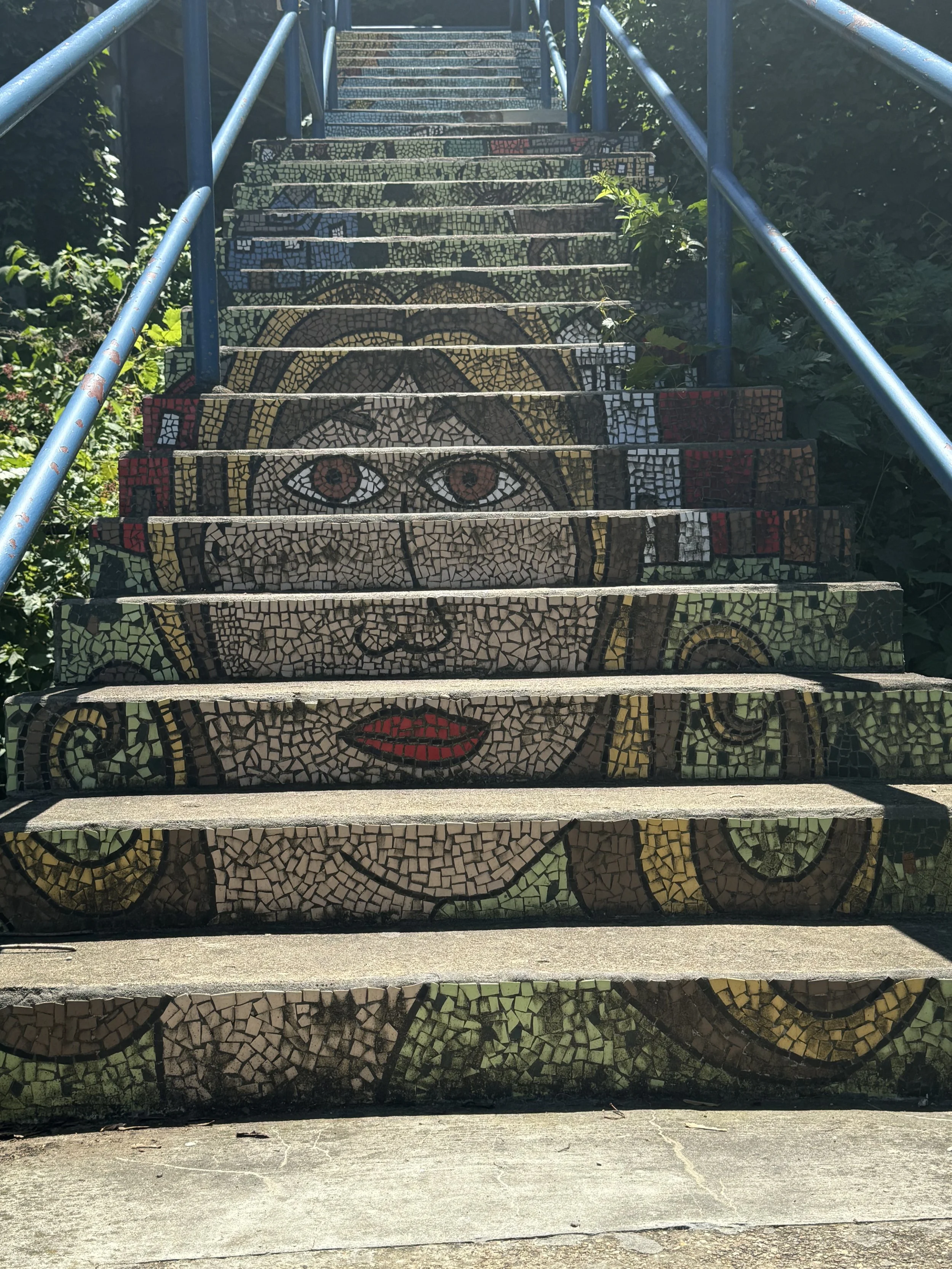Pittsburgh’s public art breathes life into the city
Pittsburgh’s public art could be likened to the city’s fingerprint. It is unique, celebratory of local voices and a testament to its post-industrial landscape.
Unlike art found in galleries or museums, public art occupies shared spaces, making it accessible to everyone, from casual passersby to enthusiasts. Art of this type—murals, sculptures, mosaics, or installations—isn’t always created with aesthetics as its priority; it is woven into the fabric of the city itself, influenced by urban planning and community demands.
Art lovers go to museum exhibits, usually paying to see art in carefully curated settings like museums and galleries—mostly indoors and exploring an artist’s thematic journey. However, with curated art comes a built-in exclusion: it isn’t meant for everyone. Public art, on the other hand, is intentionally placed in the open for all to view—and often—engage with.
Typically commissioned by city agencies or community organizations like ShiftWorks PGH, Pittsburgh City’s Public Art and Civic Design Commission (PACDC) and the Pittsburgh Cultural Trust, public art in Pittsburgh is designed to resonate with its community, freezing the city’s culture in permanency and capturing its history and traditions for perpetuation. The Percent for Art Ordinance was a city undertaking adopted in 1977 that directs one percent of the annual municipal construction or major renovation budget to be flowed into public art projects. Although overlooked for several years, it has been revitalized in the previous years, largely due to residential demands, with a large percentage of the budget being allocated to creating art in public parks.
More than just decoration, public art in Pittsburgh serves as a practical platform for youth and community engagement, sparking conversations, inspiring reflection and becomes a catalyst for social and cultural evolution.
As public art invites everyone to interact with the creative spirit of Pittsburgh, The (New) Pittsburgh Exposition offers seven public art sites in and around the city that have helped define its civic art scene.
Maxo Vanka Murals
Millvale
There are 25 individual murals painted by Maxo Vanka in the St. Nicholas Croatian Church in Millvale, PA, the first Croatian church established in America in 1894. Painted in two groups in 1937 and 1951, these murals are more than 75 years old and depict vivid imagery of religion, immigration, and the ravages of war.
The murals reflect Vanka’s profound immigrant experiences. Born and raised in Croatia, he fled Europe preceding World War II, and his working-class upbringing deeply informed his artistry. The first group of murals addresses themes of poverty and immigration, drawing parallels between his native Croatia and his new home in America. The second group conveys powerful messages of peace and social justice, showcasing Vanka’s commitment to advocating for the marginalized through his art.
Vanka’s murals are unique and unlike anything else. They stand grandiose and bold, and have radical interpretations that are considered radical by viewers even today.
Since the 1990s, the Vanka murals have been undergoing serious conservation efforts, with the conservation team winning the 2022 Save America’s Treasures Grant of almost $500,000.
Image by: SchultzLabs on Flickr
Wightman Park Sculptures
Squirrel Hill
In Squirrel Hill’s Wightman Park, one can find four free-standing, nature-inspired sculptures designed and fabricated by artists Oreen Cohen and Alison Zapata of OOA Designs, a woman owned and operated artist collaboration.
The designs include four stainless steel sculptures: a bench that replicates a waterfall titled Cascade along with three bugs: a butterfly named Transform, a bee called Pollinate and a lightning bug called Illuminate. Unveiled in October 2020, these installations were commissioned by the city’s Public Works department as part of a $4.2 million project to enhance Wightman Park
These projects were inspired by nature, according to Cohen, and pay tribute to a local Squirrel Hill glass company (Lorenz and Whitman Glass Co.) that stood before Wightman Park’s creation, by integrating pieces of colorful tempered glass within the sculptures.
Mustard Seed Faith
Manchester (Northside)
Created in 2020 by veteran muralists Shane Pilster and Max Gonzalez from Do What We Love, Mustard Seed Faith is a spray painted mural commissioned by Lisa Freeman, founder of the Manchester Growing Together Farm—an urban farm and hands-on educational classroom that educates at-risk and low income residents of Pittsburgh’s Northside neighborhood on healthy eating and living.
The mural consists of a large, vibrant rooster with red, orange, and blue hues set to the backdrop of flora and fauna like stalks, butterflies, and a sun that is also shaped into a sunflower.
Roosters and various plant life were the foundational themes for this agrarian mural. Since the farm is situated in the midst of three Baptist churches, Pilster and Gonzales wanted to bring in themes of faith and how small acts of religion and kindness can manifest into much larger things. So, the name—Mustard Seed Faith—alluding to the Christian Parable of the Mustard Seed, was selected along with relevant imagery.
Watch our documentary with Pilster and Gonzalez and their two day journey of creating the Mustard Seed Faith mural here.
Cloud Arbor
Northside
Located in Buhl Community Park as an extension of the Pittsburgh Children’s Museum, Cloud Arbor is an interactive display of mist—created from, rising, and swirling within a grid of 64 tall stainless steel poles. Cloud Arbor was created by Ned Kahn—a California based visual artist with a special interest in weaving weather science and natural elements in his artwork—in collaboration with landscape architect Andrea Cochran and the Pittsburgh Children’s Museum.
This 30 ft. installation was unveiled in 2012 and functions as the park’s and Children Museum’s focal public gathering space throughout all seasons. On a hot day, you can view children and adults cooling themselves off under the “cloud.” The Buhl Community Park was intended to be a tranquil green space that unified community members of the Northside—adults and children alike.
Along with Cloud Arbor, the park also includes important design features like a bioswale and native vegetation to educate visitors about sustainability.
Image: Library of Congress, Prints & Photographs Division, photograph by Carol M. Highsmith [reproduction number, e.g., LC-USZ62-12345]
The National Museum
622 Wood Street, Downtown
Note: this is a limited time display
Founded and curated by Pittsburgh artist and Carnegie Mellon art professor Jon Rubin, the National Museum is a 2-year rotating public art project in Downtown Pittsburgh in the form of a large storefront signage that is changed every few months. The National Museum is a “theoretical institution”—placed in front of an abandoned shop lot—taking on questions of borders, war, cultural and social identity. It “repeatedly asks which stories, histories and futures are deemed worth saving and which are ignored or forgotten.”
Previous artists have included Walid Raad, Pablo Helguera and Edgar Heap of Birds. Past essayists have included Jalal Toufic, Suzan Shown Harjo and janera solomon.
Commissioned by the Pittsburgh Cultural Trust, this introspective project shifts themes every quarter, with a selected artist setting a new theme that is accompanied with an essay by a national writer.
Its most recent iteration displays the words, “The International Museum of People’s Uprising,” coined by artist Dread Scott. Other recent themes have included the “National Museum of Mortal Guilt,” the “National Museum of Broken Treaties” and the “National Museum of Nostalgia for the Very Moment You Are Living.”
Legends of Pittsburgh
Downtown
Created in 2000 by Art Institute of Pittsburgh faculty member Michael Malle as an enlarged recreation of his original painting, Legends of Pittsburgh celebrates iconic baseball players from both the Pirates and the former Homestead Grays, paying tribute to the Steel City’s rich sporting history.
Located at 2nd Ave and Ross St, below the Boulevard of the Allies, the mural features 14 larger-than-life players including Roberto Clemente, Honus Wagner, Josh Gibson, and Willie Stargellin their uniforms from their respective eras. The painted players were chosen by members of the Pirates.
Initially created 25 years ago, the mural was renovated in 2008 for Pittsburgh's 250th celebration. On a nearby wall, viewers can also find a painted outfield wall resembling Forbes Field, purposefully covered by ivy.
Oakley Street Mosaic Steps
Southside Slopes
Pittsburgh is home to various topographic oddities: bridges, inclines and stairs being some it has in excess. The city holds the record for the highest number of public stairways in the country, with over 700 of them going through residential neighborhoods and dense green areas. The Oakley Street Mosaic Steps project was proposed in order to give the perfect homage to the city’s geography.
Commissioned and completed in 2016, the Oakley Street Mosaic is a collaborative mural on the staircase of Southside Slopes, the brainchild of ceramic sculptor, print maker, and mosaic artist Laura Jean McLaughlin.
Thousands of colorful Italian tiles were installed and grouted on the stairway by nearby residents and the members of the Southside Slopes Neighborhood Association, who came together to raise approximately $6000 the previous year through an online crowdfunding campaign.
This months long project culminated into a colorful mosaic that depicts a young woman standing in front of the Monongahela river, surrounded by houses, flowers, and wildlife.

